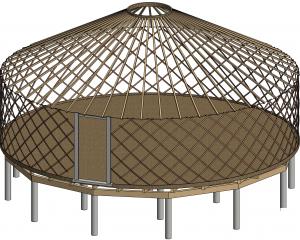It might lack the machismo of a space rocket launch, but Nasa's launch of a super pressure helium-filled balloon from Wanaka Airport on Monday, weather permitting, gives New Zealand a tiny entree into the world of space exploration. Mark Price reports.
Otago Museum director Dr Ian Griffin is a keen astronomer who used to work on the Hubble telescope programme.
So guess where he would like to be on Monday, or whenever the balloon goes up?
Viewing platforms such as Mt Iron or Kane Rd north of Wanaka Airport are likely to be filled with spectators waiting for the lift-off of a space balloon the size of Forsyth Barr Stadium (though it should be pointed out the balloon takes time and altitude to expand to its full volume).
But, it is not all about the spectacle.
Nasa is testing Wanaka's suitability as a site for two-yearly balloon launches - a place from which to send complex pieces of scientific equipment into the stratosphere to examine the big questions of the universe.
Dr Griffin says he thinks it is fabulous for New Zealand to be involved, and not only because of the economic gains from the visits of American scientists.
''The young people living around Wanaka are going to be able to see the balloon take off.
''I'm sure a number of them will be inspired by that and will take more interest in science.
''So, it's not just about the economic benefits; it's about inspiring that generation.''
Dr Griffin said one of the advantages of space exploration by balloon was that it was cheaper than using rockets.
''That's why a number of researchers are doing balloon-borne rather than rocket-borne, because the economics are slightly better.
''I don't think any of the science is particularly cheap, but you can do a lot of things in a balloon.''
While the Wanaka test balloon will carry only ballast, balloon-borne experiments in the past have studied such things as gamma-rays, X-rays and cosmic-ray and the gases of the upper atmosphere.
''Because a balloon now can float up high above the surface of the earth ... for weeks on end, you really can do some amazing science,'' Dr Griffin said.
Responding to questions from the Otago Daily Times this week, Science and Innovation Minister Steven Joyce said the balloon launch would ''showcase Wanaka's unique potential'' as a long-term base for future space and atmospheric research.
He considered the balloon programme would broaden research links between the United States and New Zealand, grow the country's atmospheric research capability and increase spending in Wanaka.
''New Zealand and Nasa have worked together previously but this collaboration is a significant step up in scale and potential long-term benefits for the region.''
Mr Joyce noted the South Island had proven to be an ideal environment for research for the University of Canterbury, through its Mt John Observatory at Lake Tekapo, and Niwa, with its atmospheric research station at Lauder.
Asked if he would like to see Nasa balloons carrying New Zealand experiments, Mr Joyce said he would welcome the Nasa team talking to their New Zealand counterparts to ''find opportunities'' to incorporate New Zealand research into future flights.
Queenstown Lakes district deputy mayor Lyal Cocks, of Wanaka, said the balloon programme had already brought benefits to the district, with Nasa extending ultra-fast broadband into the airport.
The programme would also put Wanaka ''on the map'' and bring direct economic benefits from Nasa staff visiting.
''I think it has a significant benefit and we are very supportive of it.''











